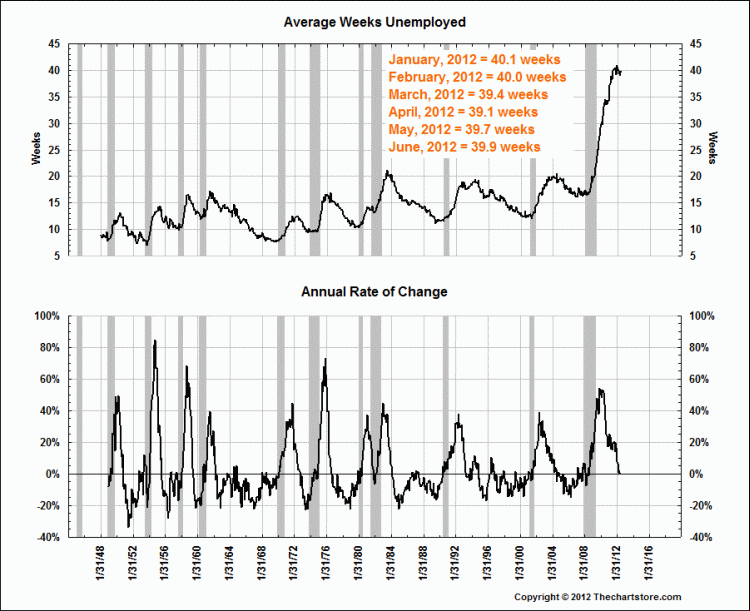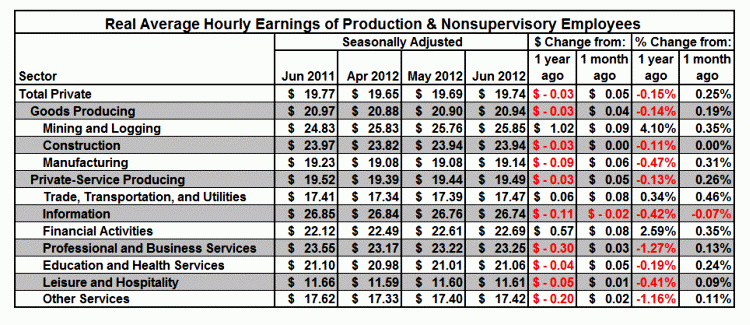At 15% of the civilian labor force, total unemployment was down last month from its 17% high in October 2009, but it was still almost twice as high as before it rocketed up from the start of 2008.
At 40 weeks last month, the average number of weeks unemployed has not changed this year after increasing sharply from less than half that level at the start of 2008. The rate of change was very high during 2008. It dropped rapidly since the start of 2010 to stabilize at the current exceptionally high level.
Employment continues to drop in federal, state and local governments, all of which get less tax revenue because our economy is in recession. They account for a little under 17% of total non-farm payroll. In the goods producing sector which accounts for 14% of total non-farm payroll, we see 2% growth in manufacturing from one year ago. In the service sector, 70% of total non-farm payroll, we see 3% growth in professional and business services, 2% in education and health, 2% in leisure and hospitality, and a small drop in information services.
Persistently high unemployment has driven average hourly earnings down from a year ago. The only exceptions are mining and logging, the second highest paid sector, which is up 4%, financial activities up 3%, and trade, transportation and utilities, the largest individual sector payroll, which is up 0.34%.
Professional and business services, the sector with the highest payroll growth, had, at 1.27%, the greatest drop in average earnings from a year ago. Manufacturing, the highest payroll growth goods-producing sector, had the next highest drop in average earnings, down 0.47% from a year ago. Information services, the only service sector where payroll dropped, had the next highest decline in average hourly earnings, 0.42%. That is almost identical to the 0.41% drop in average hourly earnings for the sector where average earnings are by far the lowest, leisure and hospitality.
Continued tax cuts will drive continued cuts in government payrolls, which will worsen our economic decline. People without earnings can spend only what is transferred from those who do. We must restructure our federal budget as I’ve noted in posts at http://usaturnaround.wordpress.com/ But as I’ve also noted there, we must at the same time restructure our economy. We must create more jobs. Without jobs there are no earnings, and without earnings there is no economy.
The big question is what kind of jobs in which sectors? More and more jobs can be done at lower cost by workers in other countries, or by machines. Businesses will, and should, continue to cut their high cost payrolls. They have no incentive to form strategies to increase US payrolls. Politicians do have that incentive but chiefly in the short term, between now and their next election. That is OK when the world is not changing but this is not such a time. We must figure out how our society and economy should respond to currently unfolding great changes, identify the projects to achieve that transformation, and mobilize our workforce.
I began to explore this at the end of my previous post, “Monetary Policy, Fiscal Policy – What to Do?” at http://martinsidwell.com/?p=117 and will continue.




